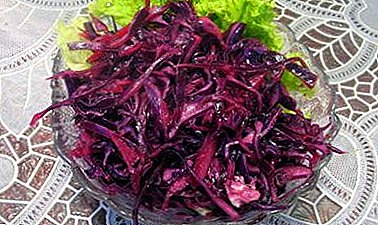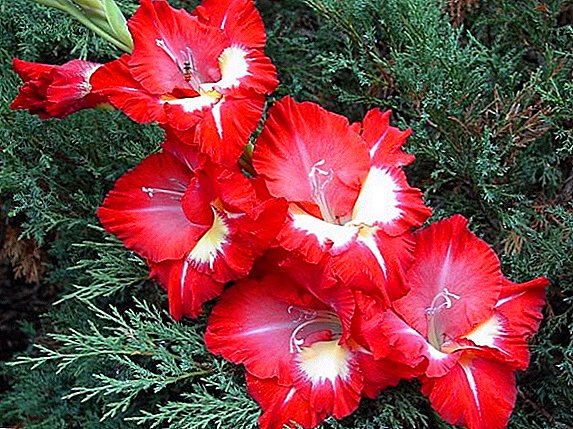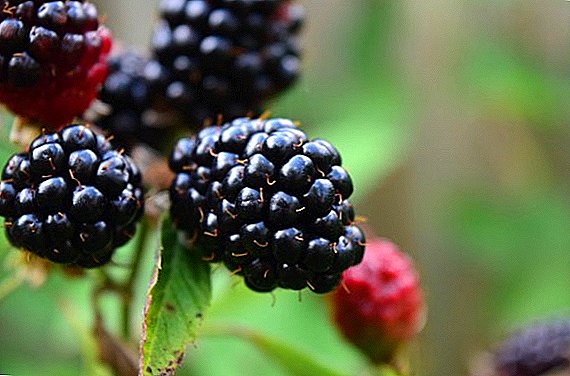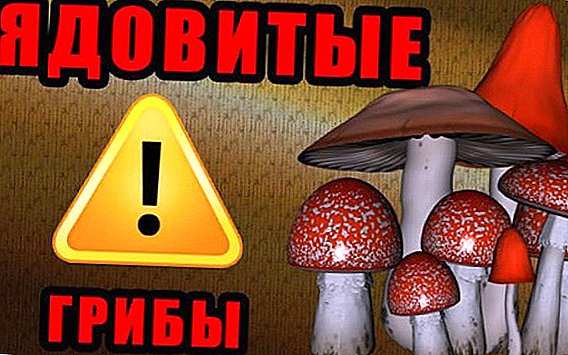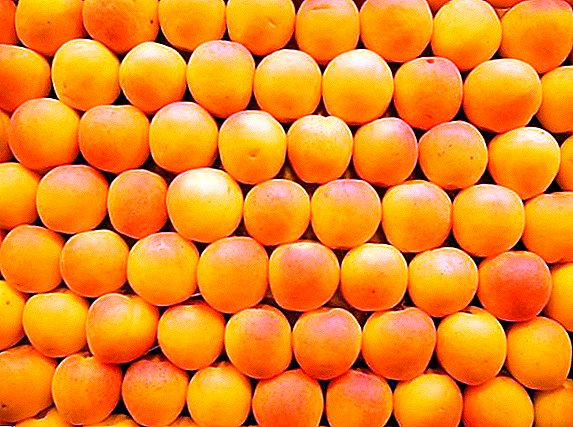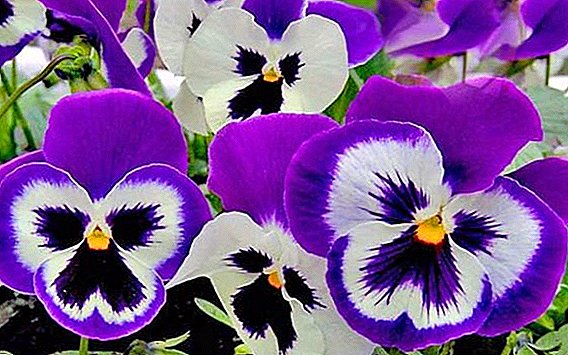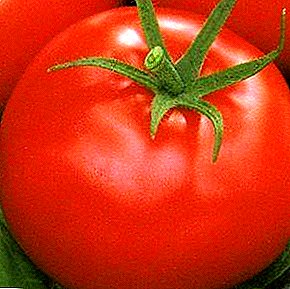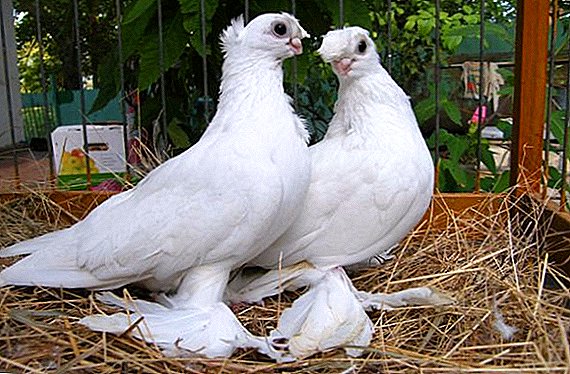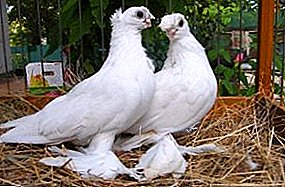 Breeding pigeons can pursue completely different goals.
Breeding pigeons can pursue completely different goals.
Some people breed them as a future source of meat, some - in order to get ideally beautiful offspring, which would not be ashamed to show at the exhibition, someone - just loves to watch the beautiful flight of these magnificent birds.
For the latter, this article is more intended for general overview of Uzbek pigeons with some names, analysis of the history of the appearance of this species of birds and the peculiarities of the content of this breed.
Description and photo
The Uzbek, or as they are called "battle", pigeons get their name because of the specific style of flight, in which their wings make a special sound, resembling the oscillations (fight) of matter in a strong wind.
Their special feature is the ability to soar in the sky for a long time and at the same time to be constantly at a high altitude.
Did you know? An adult pigeon grows up to 10 thousand feathers, some of which have a special structure designed to facilitate the flight of these birds, and some make a special sound when flying, which helps pigeons to communicate.
 The battle pigeons are also often referred to as “traps”, for their specific landing style, which occurs at a very high speed and is accompanied by air flips, which sometimes can reach up to 20.
The battle pigeons are also often referred to as “traps”, for their specific landing style, which occurs at a very high speed and is accompanied by air flips, which sometimes can reach up to 20.Story
According to the testimony of L. Danilov, an eminent pigeon breeder from Tashkent, for the first time pigeons were brought to the territory of Uzbekistan, significantly different from the usual breeds with abundant plumage on their legs and short beak in the second half of the 18th century.
Many pigeon breeders became interested in the new variety, and already from the 1850s began to conduct breeding activities in order to improve both the unsightly appearance of pigeons and the effectiveness of the takeoff and landing process. The result was the appearance of pigeons of Uzbekistan.
There is evidence that, for example, to obtain the Armavir breed, which is characterized by a short beak, abundant growth of feathers on its legs, a smooth head and impressive flight-game performance, these pigeons were crossed with a gull and a short-billed turman.
Did you know? There is a breed of pigeons, called the "Birmingham Roller", which is known for being prone to do flips during the flight, the functionality of which scientists are not yet able to explain.
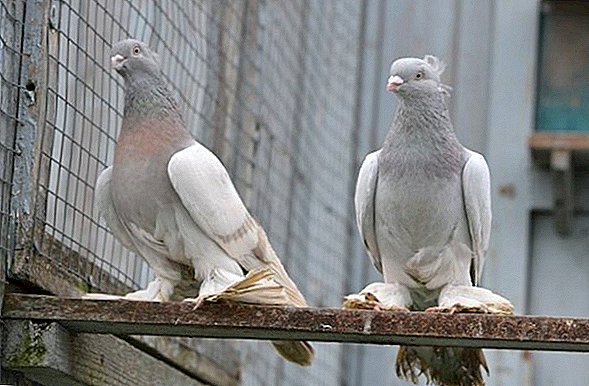
Appearance
The appearance of different breeds of Uzbek pigeons can vary significantly in different parameters, whether it is the presence or absence of a tuft or forelock, the size of the neck and beak, body weight, as well as the color and intensity of the plumage. 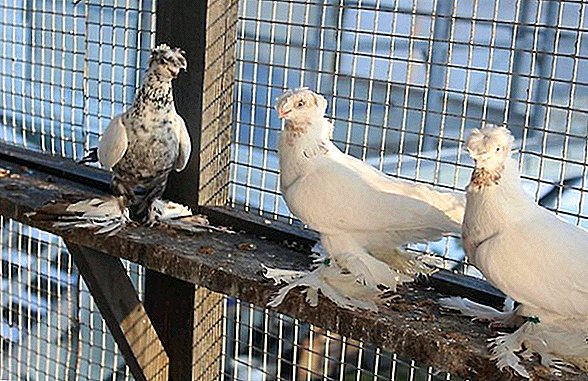 A common feature of these breeds is a small length of the beak, the size of which is inversely proportional to the value of the individual. As a rule, he wears a white color, although the owners of the plumage of darker shades have a grayish beak.
A common feature of these breeds is a small length of the beak, the size of which is inversely proportional to the value of the individual. As a rule, he wears a white color, although the owners of the plumage of darker shades have a grayish beak.
The carcasses of representatives of all these breeds are of medium size, neat, slim, simple in structure. The body is slightly elongated, the tail and back when connected by a conventional line give a straight line. Feathers fit snugly to the body, moreover, the tips of the plumage are the basis closer to the tail.
The head is rounded, set low. The eyes are rather large, pearly, black or light gray in color, which correlates with the color of the feathers.
Leather - white. Feathering on the legs, also referred to as "spaces", is an identifying mark of these birds, which only purebred members of the breed can boast. The shape of the cosmos resembles an inverted dish or plate.
Legs, compared to other species, are rather short. Coloring can vary greatly, ranging from white to sizoy. The wings and tail can be decorated with stripes of various colors. 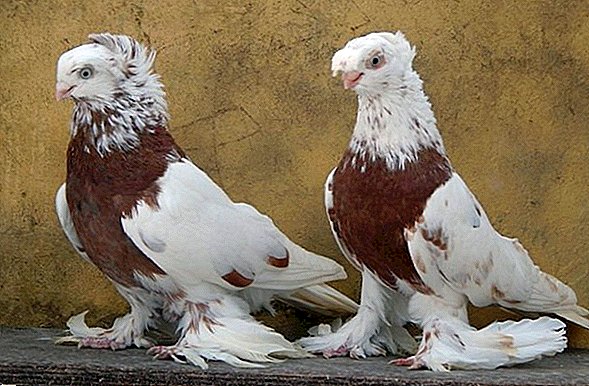
Kinds
The most large-scale classification, approved in 2008, involves the division of all representatives of the Uzbek breed into "flight-game" and "exhibition" pigeons.
The value of the latter increases in direct proportion to the similarity with the reference description of a pigeon of one kind or another, and the former are valued, first of all, for the different colors of the color and for the spectacular takeoff and landing maneuvers.
You will probably be interested to learn more about the breeding of pigeons peacocks and pigeons.Among the flight-games, pigeons tasmans have found the greatest popularity, which can be seen in a variety of circuses, at fairs, as props at weddings and other festive events.
Unclean
This species of birds has a small, smooth head and a short neck. The plumage of this species of birds differs in its smoothness and close adherence to the body, and the presence of any bristling sections is regarded as a sign of unclean breed. 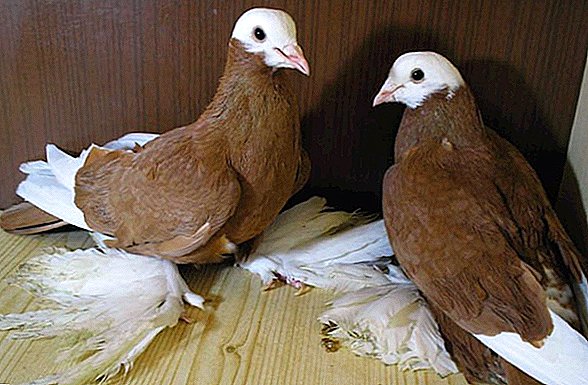
Nosocubic
As the name implies, feathered individuals of this species have a specific feather cover in the area of the beak. Sometimes the chub under the beak of such a feathery is so large that it is impossible to examine the mouth itself behind it. 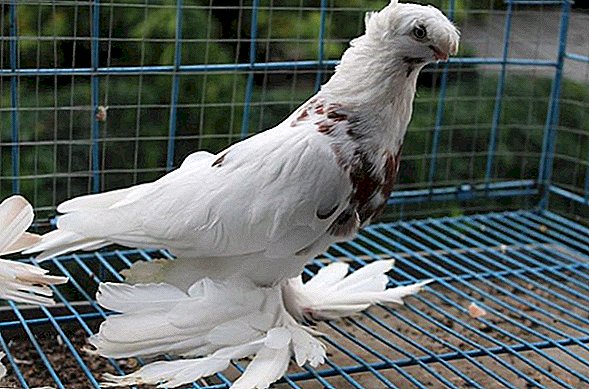
Chubaty
These birds, as well as their double-breasted brethren, are also called pigeons by bangs. One can guess that on the back of their head there is a forelock or a featherlift of a different kind, which sometimes reaches 2 cm in height.
However, in the event that such a bird is lucky enough to take part in an exhibition or competition, it will still have an artificial tuft, to ensure greater external presentability. 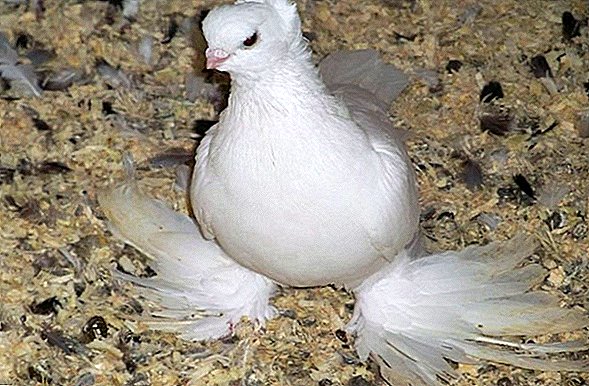
Double crested
This species of birds has a double tuft, which closes the cep and is located on the crown, often crawling onto the front-upper part of the feathered head. In comparison with other representatives of this breed, they have a slightly more massive physique. 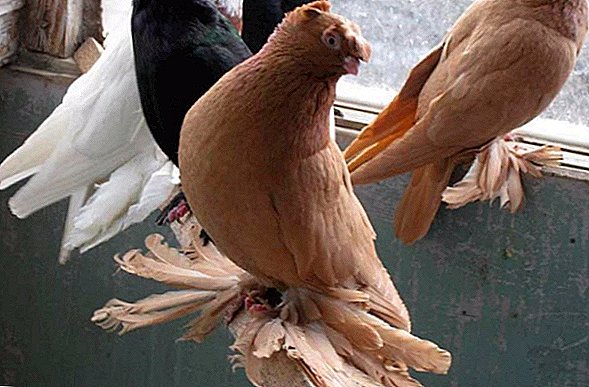
Short-faced
The length of the beak of purebred specimens of this breed should not be greater than 8 mm. A beak of similar dimensions is one of the main signs of pure blood, and if it is greater than the indicated values, then the individual can no longer belong to this species.
Important! A special system has been approved in Uzbekistan that allows you to accurately determine whether your bird's beak complies with reference parameters.
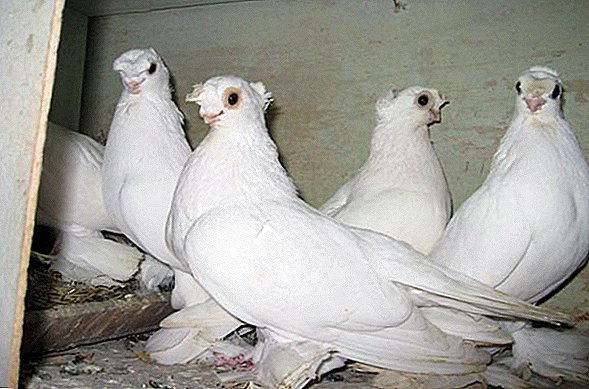
Features of the breed
An important aspect of the content of these pigeons is the correct and balanced menu, which should take into account all the age and annual periodical changes in the natural processes in the body of the bird.
Both protein components, and cellulose, fats and easily digestible carbohydrates should be sufficiently present in the diet.
Learn more about feeding domestic pigeons.The life span of a pigeon of this breed is on average in the range of 10 to 20 years. Reproductive function they retain during the first ten years of life.
In the future, pigeons emerged from reproductive age, it is recommended to plant in separate cells, where they would not interfere with the young.
Immediately after the acquisition of new individuals in the poultry farm, the market or the breeder, they must be kept under strict supervision for 4 weeks.
In the event of the onset of symptoms, it is necessary to transfer them to quarantine, and it is better to initially place them in a separate cell before the expiration of the specified period.  Temperature and light conditions, as well as the humidity in the room should not differ from those in the dovecote, designed to breed any other species of these birds.
Temperature and light conditions, as well as the humidity in the room should not differ from those in the dovecote, designed to breed any other species of these birds.
The floor of the pigeon house should be covered with wooden sawdust or hay, since a hard surface can cause injury to delicate pigeon legs.
Important! From a young age, antibiotics should be added to the feed of young pedigree pigeons, as well as to carry out all vaccinations in time. These measures are designed to raise the level of immunity of birds.This type of pigeons is sure to become the main decoration of your house, so we recommend that you quickly become the owner of such beautiful and unusual birds!


